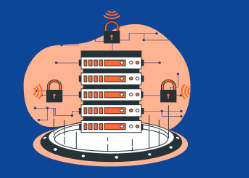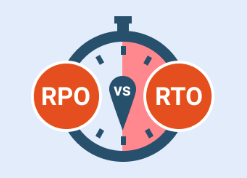We’re excited to introduce MSP360 Managed Backup 8.0 with advanced integration with ConnectWise PSA, simplified backup management with templates, and more. Continue reading
Understanding HIPAA Requirements for Data Backup
If you’re an MSP who provides backup and recovery services, and any of the data you back up could contain medical information, HIPAA is a law you need to know. Although at first glance HIPAA may not seem to have major ramifications for data backup, it actually includes extensive provisions that regulate how data is backed up and how backup data should be secured. Continue reading
News You Might’ve Missed. May 2022
What's new this month in the news for MSPs? Google Cloud zeroing in on cloud governance, zero trust, open source software, etc.; 5 new critical vulnerabilities in enterprise network switches; Trend Micro finds Linux-based ransomware ”Cheerscrypt” targeting VMware ESXi servers; vulnerabilities in VMware and F5 products warning from CISA; and more. Continue reading
Top Security Threats in Cloud Computing and How to Mitigate Them
Cloud adoption continues to rise across every industry, with one estimate predicting that 90% of enterprises in 2022 will utilize cloud systems at least in some form, and 70% of organizations reporting that they plan to increase their budget for cloud services in the future. It’s no surprise — the cloud allows organizations to increase their technology capabilities and flexibility, often with a better pricing structure. Continue reading
MSP360 is Deprecating Support for Transport Layer Security 1.0 and 1.1
What is TLS?
Transport Layer Security, more commonly known as TLS, is a security protocol for establishing encryption channels in order to provide secure communications over computer networks. Currently, MSP360 supports TLS 1.2, which is far more secure than TLS 1.0 and 1.1. Continue reading
Should Smaller MSPs Carry Insurance?
There’s one thing that’s always true in life and in business: expect the unexpected. Sometimes, these unexpected moments can be bumps in the road, and other times they can be life-altering or catastrophic changes that require significant capital, expertise or other resources to navigate. Continue reading
5 Ways to Improve Sales and Marketing
Overview
As a rule, businesses can't expect to survive without a solid sales and marketing strategy. MSPs are no different. MSP marketing aims to generate interest in the company's services through focused methods, investing in the proper channels and persistence. Continue reading
5 Ways 5G Networking Opens New Frontiers for MSPs
5G, the latest technology standard for mobile networks, is creating a variety of benefits for businesses. To leverage those benefits to the fullest extent, however, many businesses will require help from MSPs. Continue reading
Disaster Recovery Planning Best Practices
A disaster recovery plan is a recorded policy and/or process that is designed to assist an organization in executing recovery processes in response to a disaster to protect business IT infrastructure and, more generally, promote recovery. Continue reading
The Dos and Don’ts of Remote Support
When the COVID-19 pandemic first broke out, many companies made the emergency transition overnight to allow their employees to work remotely. Now, two years later, a lot of organizations have realized the benefits that remote work can bring and are looking to maintain it as an option for their employees.
For managed services providers (MSPs), this new remote work trend means that they may have to adapt the way they proceed in supporting their clients, including remote support capabilities. Remote support allows an MSP to access, monitor and repair computer systems via a remote Internet connection, a capability that is essential for remote employees who may be anywhere in the world. This benefits MSP clients who may now have many remote employees, or the MSP themselves, as their own employees may prefer to be remote.
Further reading The Benefits of Remote Support
Having strong capabilities in remote access allows an MSP to more quickly support regular office employees, or servers and other technologies that may be in other locations. By seeing to it that they are following best practices in this area, an MSP can differentiate their services and ensure that they are providing the best support to meet all their customers’ needs.
When it comes to providing remote support, there are several points an MSP should consider as they develop their service package or look to optimize it to deliver the best service to their customers.
Start with Your Team
Building a successful remote support strategy starts with the MSP’s team. Business leaders should make sure they have clear procedures set for their team, including strong action strategies and expectations, as well as key performance indicators (KPIs). This will set the standards for employees delivering remote support, as well as help to align expectations for customers. Education for support agents is the key to ensuring best practices for remote work.
One behavior for an MSP to avoid is micromanaging, a trait that’s tempting in a remote work environment. However, by empowering employees with clear expectations and education, a manager should be able to avoid the bad habit of checking in on employees every hour – something that may alienate your staff and waste valuable time.
Enable Team with Knowledge and Communication
It’s more important than ever for remote employees to have the knowledge they need to perform their jobs effectively, as they can’t simply reach out to a colleague who usually sits at the next desk. For that reason, MSPs should enable their team members with up-to-date knowledge, as well as any other documentation that an employee may need to carry out remote support. Implementing digital communication tools, such as G Suite, Teams, Slack or Zoom, can also help ensure that the communication section remains strong, no matter where individuals are.
Provide the Best Tools and Technology
Just as with any other task, having the right tools can make a significant difference in how remote support can be delivered. MSPs should consider whether their current remote monitoring and management (RMM) systems are allowing their teams to support clients effectively, as well as whether there are other tools they can leverage to improve remote support or collaboration. Investing in technology can also mean making sure that employees have the Internet connectivity they need to carry out support consistently, or access to cloud services to guarantee that the quality of service remains high.
Maintain Strong Customer Communications
Besides ensuring strong communication amongst their own team, MSPs should also take care that they are maintaining clear, consistent and proactive communications with their customers. While communication is always important, it is especially vital in a remote support situation, where MSP employees may not be on site to ensure that they are addressing customer concerns or remaining top of mind throughout the lifecycle of the relationship. An MSP can do this by sending regular reports, staying proactive around any payment reminders, and planning changes by setting up regular touch points for review of services.
While the pandemic may be moving toward its end, remote work is here to stay. This can present a significant opportunity for MSPs who adapt to this trend, both in how they support customers with remote employees and in how their own employees can leverage the benefits of remote work.
How Ransomware is Evolving
Over the past two years, it’s been hard to miss the unmistakable rise in ransomware attacks affecting businesses everywhere. Headlines throughout 2021 and into the start of this year were dominated by ransomware attacks underway, or the long-term effects they were causing on businesses, supply chains, and other essential functions. Continue reading
Introducing MSP360 RMM 1.3
Starting from version 1.3, MSP360 RMM gets to a new level by adding even more automation of daily administrative tasks and helping IT administrators to keep track of important changes on the clients’ computers. We're excited to introduce such features as software and Windows Updates deployment, new alerts, and reports that will simplify tech engineers' daily routines and give them fewer things to worry about. Continue reading
















